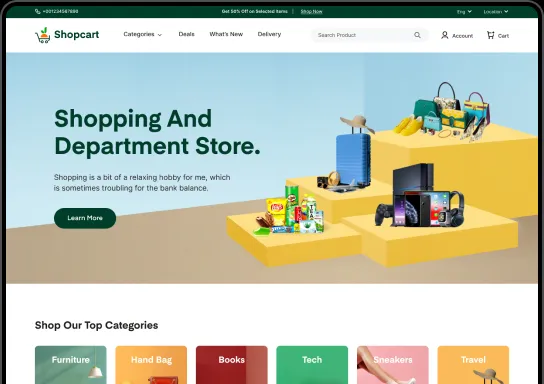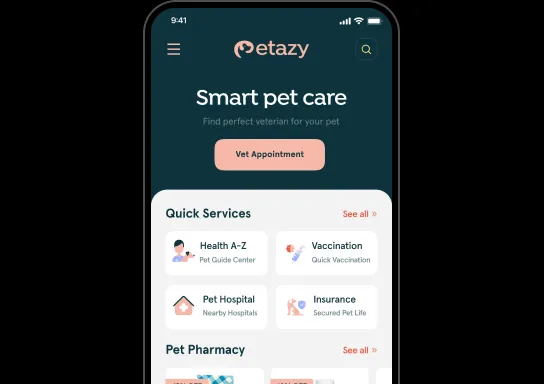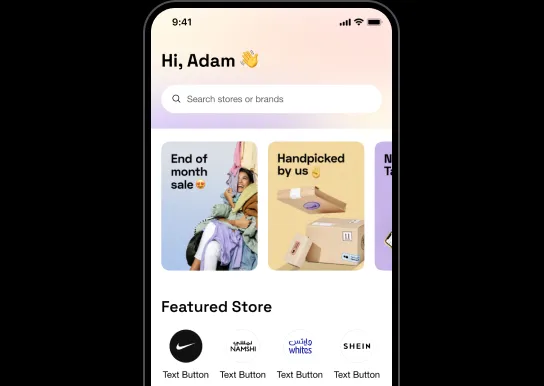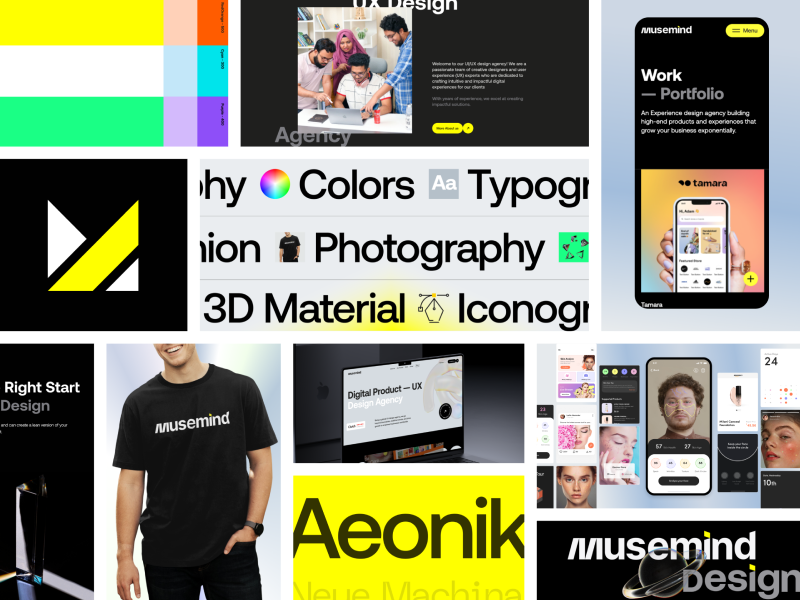To make a design human-centered to meet the needs of the users, the designer follows some specific steps. In fact, these steps are called the design thinking process. It’s all about following a structured process throughout the design to make it precise, organized, and efficient. It's actually five steps in the design thinking process.
Then, what are the 5 design thinking processes?
Emphasis is one of the five design thinking processes. It refers to the research of user needs. The other four design thinking processes include defining, ideating, prototyping, and testing. You can create something exceptional by following these steps in the correct order.
Is this information enough for you? Well, hold on to your curiosity because there's much more to come in the subsequent segments. You're in for a comprehensive guide on this topic!
However, before going into the in-depth design thinking process, you should clearly understand the design thinking process.
Key Takeaways
- What is Design Thinking?
- 5 Stages of The Design Thinking Process
- How to Start Design Thinking?
What is Design Thinking?
Design thinking is a problem-solving approach that focuses on consumer needs. It helps tackle complex problems, emphasizing human-centered design for better outcomes. It's not exclusive to designers and is used by innovators in various fields.

The goal is to design better products, services, and experiences. Design thinking observes people with empathy, uses an iterative approach, and favors quick prototyping over excessive research.
Unlike linear problem-solving, it continuously evolves thinking and responds to consumer needs. It opens up new thinking and offers hands-on methods. It can be applied across industries and departments, enabling innovative solutions based on customer needs.
5 Stages of The Design Thinking Process
Design thinking is an iterative process where you try to understand your users, test your assumptions, reframe problems, and develop new solutions that you can test with a prototype. The main purpose is to find other strategies and solutions that aren’t immediately obvious based on what you know now.
Stage 1: Empathize – Understand Your Users’ Needs
Empathizing is the first stage of the design thinking process. In this process, you observe and consult with your users to gain a personal understanding of their needs. The goal is to understand your users' experiences, motivations, and problems. You need to set aside your assumptions to obtain insights into the users' world.
During this stage, as a designer, you visit users in their natural environments, learn about their behavior, and conduct interviews. It is crucial because it helps designers set aside assumptions and gain insight into users' needs.
In the empathize phase, you need to observe and engage with users psychologically and emotionally. This helps in suspending your own view of the world to see it through their users' eyes.
Stage 2: Define- Users’ Needs and Problems
The define stage is where you define the problem you're trying to solve. It's a crucial step because it sets the foundation for the rest of your design thinking process. The goal here is to create a problem statement that really means something, can be acted upon, and puts people at the center.
To create that problem statement, you need to take a look at all the data you gathered during the Empathize stage. It can be from user interviews, observations, and surveys. By going through that data, you can spot patterns and get insights to help you define your problem.
Once you've figured out the problem, it's time to write up your problem statement. It needs to be clear, short and focused on the user. It should describe the problem and why it's crucial. And most importantly, it should give you a clear path forward for the rest of your design thinking journey.

One cool technique you can use to craft your problem statement is called "How Might We" (HMW). Basically, it's a way of asking questions that helps you see problems as opportunities for innovation.
For instance, if you're dealing with people struggling to find their way around a new city, you could reframe it as "How might you make it easier for folks to navigate a new city?" This reframing sparks your creativity and gets you thinking outside the box for solutions.
Stage 3: Ideate—Challenge Assumptions and Create Ideas
During Ideate, you dive into all sorts of fun and curious activities to spark your imagination. Brainstorming, creating mind maps, sketching your thoughts, and covering chart papers in colorful concepts are all part of this fun. Here, you're supposed to generate as many ideas as possible without worrying about their feasibility.
Ideation is like a playground for you because it lets you think freely and explore new possibilities. You're encouraged to step out of your comfort zone, challenge the norms, and go beyond what's considered normal. It's a collaborative process, too, where everyone builds on each other's ideas to develop even better solutions.
Now, it's worth noting that the Define and Ideate stages overlap quite a bit. The information you gather and the problem statement you defined in the Define stage lay the groundwork for generating ideas in the Ideate stage. By empathizing with users and understanding their needs, you gain insights that drive the creation of potential solutions.
Stage 4: Prototype—Start Creating Solutions
We will now talk about the fourth stage of design thinking: prototyping. In this stage, you get to bring your ideas to life by creating early versions of your solution. The goal here is to test those ideas and gather feedback from users.
Now, when it comes to making prototypes, there are two types you can use: low-fidelity and high-fidelity.
Low-fidelity prototypes are all about the basics. They help you figure out the core elements and functionalities of your solution. These prototypes don't use fancy materials or look exactly like the final product, but they test how well the solution works.
Meanwhile, high-fidelity prototypes are more detailed and closer to what the final product will be like. They give you a chance to test the look and feel of your solution, and they allow you to gather valuable feedback on the user experience.
Making multiple prototypes reduces the risk of innovation. By quickly trying out different ideas, you can identify what works and what doesn't, saving both time and money. This stage is about uncovering insights, resolving uncertainties, and ensuring your solution is on the right track.
Stage 5: Test Your Solutions
In the testing stage, you take those incredible prototypes you created in the last stage and put them in front of real users. You want to see how they interact with your creations. The goal of this stage is to gather feedback from users and make your designs even better.
The process is like a science experiment, where you keep experimenting and testing to see how customers actually use our solutions. This way, you can ensure your ideas and prototypes solve your customers' problems before investing more time and effort into them.
Testing isn't something you do once. It's an ongoing process that you can do at different points throughout the design thinking process. The insights you gain from testing help you understand our users better, develop new ideas to solve their problems, and improve our prototypes.
Usually, testing comes towards the end of the design thinking process once you've developed a concept or a prototype. But here's the thing: design thinking is not a straightforward, step-by-step process. It's more like a loop you keep going through, learning and discovering new things. So, we may need to go back and revisit previous stages based on what we learned during testing.
How to Start Design Thinking?
To start design thinking with the following steps, things will be less rough –

Broaden Your Perspective
Acknowledge that you are NOT your users/customers. When we talk to our clients, they sometimes reply, “I already know what my customers need!” When we inquire how they know this, they answer things like, “Oh, well, we did a poll a long time ago,” or “I’m just like my clients, so I already know what they would like…” These are hazardous waters to navigate. Customers are not designers and stakeholders!
Personas help understand users’ goals, motivations, and challenges. Personas help teams remember who they’re solving for. First, learn what your customers want and need. Don’t presume you know how others feel. A crucial part of Design thinking includes acquiring customer information as well.
Balance Your Research Approach
Generally, there are three types of research: generative, evaluative, and validating. Generative research helps you to find new opportunities and understand what people want. Evaluative research helps move forward by getting feedback on experiments.
These two kinds of research focus on the future and new ideas. Traditional market research, also called validating research, tries to figure out what’s going on right now. It focuses on both what is happening now and what could happen in the future as you do your research
Embrace Ambiguity
Ambiguity might generate worry because you don’t know which path to choose. It can generate self-doubt by making you overthink whether you’re doing the “correct” thing and becoming locked in analysis paralysis. But most importantly, it will assist you in growing. This is why it is important to be comfortable with ambiguity.
- Investigate a complex problem or process by visualizing it. Use diagrams and charts to showcase the cause and effect of a particular problem or process.
- Pen down you’re every thought when you struggle with ambiguity. Outline and maintain a hierarchy of the deliverables you believe need to be completed.
- When unsure, act gradually. Take small steps, get quick feedback, and correct errors. Starting small and getting feedback quickly will help you overcome ambiguity.
- Investigate the problem in uncertain situations. Use 5 Whys to explore problem solutions.
- Consider how you handle ambiguity and change. Do you dislike change? Too many options or unclear? Yes, your responses may backfire. Work on emotional intelligence when ambiguity arises.
Engage Your Team
Make it a safe place for people to come up with ideas that might not work. Admire team members for going through the process and focusing more on what they learned than on the final solutions that may or may not have come out of it. At Musemind, we have developed a unique process to deliver the most customized solutions.
For instance, you could hold a contest at work and ask teams to come up with new ideas. Instead of rewarding the best idea, you could reward the team with the most ideas (or something similar). In general, try to change the focus.
Start Empathizing
Speak with your stakeholders, customers, employees, and users. Observe or conduct user interviews. Learn about them. Most of the time, you’ll discover that people appreciate being asked in the first place and are VERY happy to provide feedback (or voice complaints about a service or product).
Ensure that they are heard. Document their concerns. You may inquire, “What would you like to see from us?” or “What would be your ideal experience?” Using these types of questions, collect as much information as possible. Ensure that your questions are appropriate; otherwise, you won’t be able to obtain the actual issues.
Question Everything
Convert problems into questions. You can find the ideal solution once you identify the real issue. You must use your problem-solving skills in this situation. Start with some observations, such as “we can’t process claims fast enough” or “we have a huge backlog,” if you are an insurance company having trouble processing claims.
After that, ask pertinent questions, such as “Why can’t we process claims quickly enough using the design thinking process?” “Where is there a backlog?” Who is a part of this process? “Who could we consult for advice?” Stay inquisitive!
Avoid jumping to conclusions. Design thinking is about asking the right questions, researching, and generating ideas to clarify the issue before moving on to creating solutions, as we mentioned above.
Do not forget to ask “why.” Give people the freedom and assurance to question how things are done now. The project manager and everyone else on the team should be asking why. You can try the 5 Whys Exercise to address more fundamental issues.
Build Mocks Ups
Make simple mock-ups and implement your ideas as soon as you can. Most mock-ups are made early in the design thinking process to find flaws. It works because users may be more likely to give honest feedback on rough prototypes that aren’t in the final stages of development.
To make simple mock-ups, you don’t need much time or money. Start with pen and paper or other easily accessible tools, like a slide deck, to mock up ideas and get feedback that will help you better understand your customers’ needs before you invest in production.
Conclusion
With concrete UX planning, you can save hundreds of hours and money on engineering. Investing in design thinking saves money and shifts your focus to revenue generation because better UX means happier customers. The first condition of design thinking is putting users first.
When comparing a user experience project to another investment with similar business goals, the value of user experience resulting from design thinking is especially compelling.



























